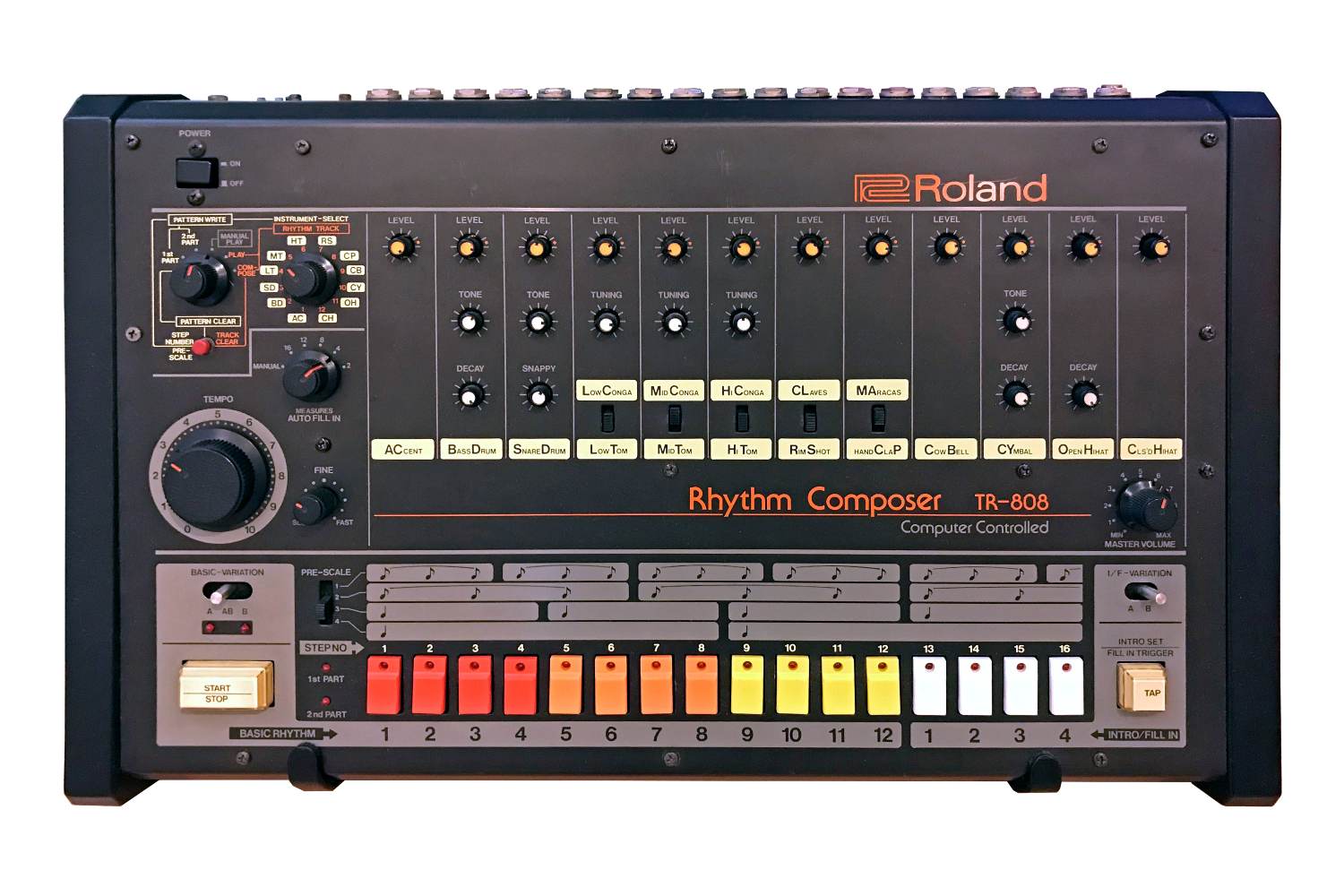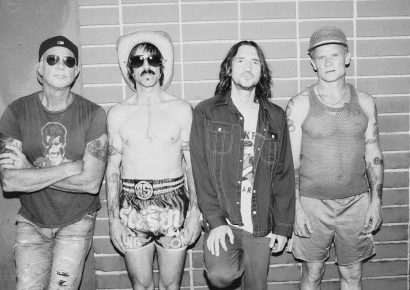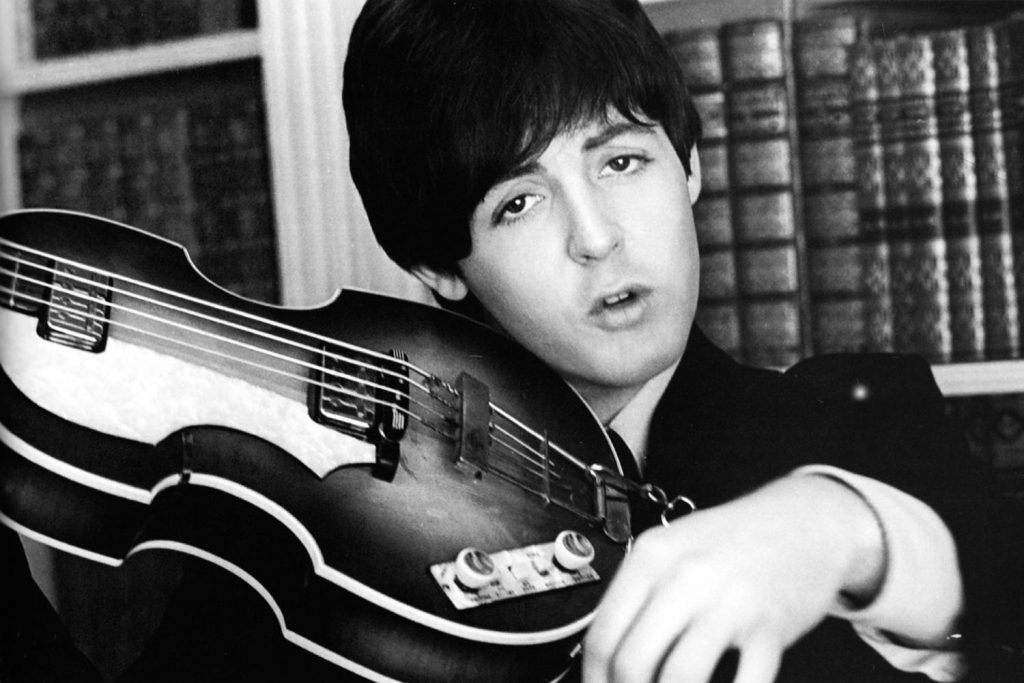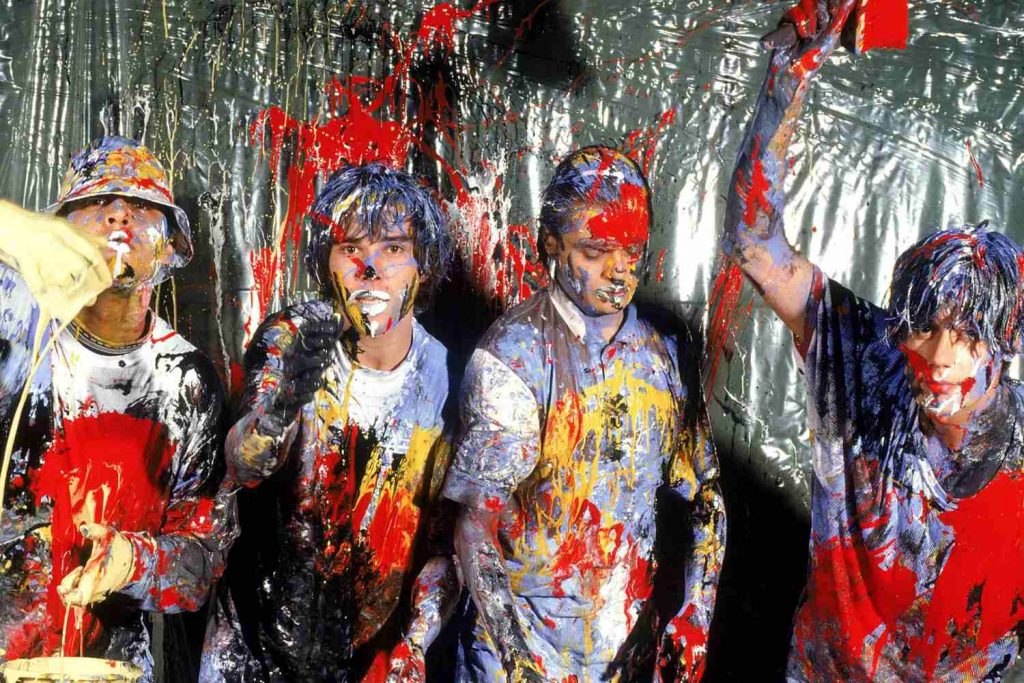From Marvin Gaye to Future, we explore the legacy of Roland's accidental classic.
Today, the music world looks back on the legacy of the Roland TR808, one of the most important drum machines of all time. It’s been long said that the Roland TR808 is as important to hip-hop as the Fender Stratocaster was to the development of rock music, but the TR808 goes much deeper than that: it’s one of the most iconic electronic drum sounds the world has ever known, and has appeared in abundance across some of the most successful and significant productions of the past 40 years.
Roland drum machine
Read all the latest features, columns and more here.
Today we’re looking back at eight tracks that have carried the torch for the TR808 since its introduction in 1980, exploring how Roland’s accidental classic has inspired new genres and certainly asserted itself as one of the most seminal pieces of music gear of all time.
Marvin Gaye – ‘Sexual Healing’ (1982)
Although the TR808 had found its way onto recordings by the likes of Yellow Magic Orchestra the year prior, one of the first big moments for the drum machine came in the unlikely form of soul superstar Marvin Gaye, who used the TR808 on his 1982 track ‘Sexual Healing’, with its clave, hi-hat and clap sounds driving the late career hit. Using almost all of the 808’s functionality, ‘Sexual Healing’ was the best possible advert Roland could have ever hoped for their flagship drum machine, and proved to potential producers that the 808 wasn’t the hunk of junk so many had made it out to be in the first place.
Beastie Boys – ‘Paul Revere’ (1986)
One of the earliest proponents of the Roland TR808 was none other than Rick Rubin, who used the drum machine on a number of early productions with LL Cool J and Run DMC. However, his most memorable fling with the instrument can be easily pinpointed to its wildly inventive use on the Beastie Boys’ Licensed To Ill classic ‘Paul Revere’, where he and the late MCA reversed a drum loop to reveal the full, speaker-blowing potential of its booming kick drum.
Whitney Houston – ‘I Wanna Dance With Somebody (Who Loves Me)’ (1987)
At the height of synth-pop fever, Whitney Houston released one of the most iconic tracks of the 1980s with ‘I Wanna Dance With Somebody (Who Loves Me)’, making use of the TR808 and its distinctive timbre for the chart-obliterating dancefloor hit. Of course, Houston’s vocals on this track are amazing, and the synth bass is simply irresistible, but the true secret weapon that makes ‘I Wanna Dance With Somebody’ such an ear-worm is definitely the song’s over-enthusiastic use of the 808 cowbell – a crucial ingredient to any synth-pop smash of the era.
808 State – ‘Flow Coma’ (1988)
On the other side of the Atlantic over in the UK, music producers were finding a much more gritty use for the 808’s functionality, and discovered that when paired with Roland’s TB-303 Bass Synthesiser, they could create pounding, squelchy electronic dance music which would soon become known as acid house. Just about every dance producer has utilised the 808 at some stage in their music, but perhaps one of the finest early examples of the machine in action is with the track ‘Flow Coma’ by 808 State, who adored the machine so much that they named themselves after it. A quintessential acid house track, ‘Flow State’ was one of the few tracks 808 State recorded with founding member and fellow 808 enthusiast A Guy Called Gerald, who went on to record his own acid anthem in the form of ‘Voodoo Ray’.
Aphex Twin – ‘Xtal’ (1992)
In 1992, electronic music was flipped on its head with the release of Selected Ambient Works 85-92, a timeless collection of forward thinking, atmospheric dance tracks from Richard D James – or as we most commonly know him, Aphex Twin. A known circuit-bender with a penchant for all things dastardly and odd, James uses a modified TR808 drum machine on SAW 85-92’s glistening opener ‘Xtal’, with its rumbling bass drum and scattered hi-hat pattern driving the track in a manner the world had never heard before. Electronic music wouldn’t be the same as it is today without this track, and more than 30 years since its creation, it still sounds as futuristic as it did back then.
Outkast – ‘The Way You Move’ (2003)
Away from the dance floor and back to the United States, TR808 found a special place in the heart of the Dirty South, with listeners across Texas, Florida and Georgia decking out their trunks with the biggest subwoofers possible to enjoy the booming low frequencies of an emerging genre known as trap. There’s an abundance of great tracks that utilise the 808’s booming low-end from this era – Three3 Six6 Mafia’s ‘Slob On My Knob’ is a certified classic – but nothing enshrines the power of the TR808 quite like Outkast’s seminal Speakerboxx track ‘The Way You Move’, where Big Boi pines for the thump of the drum machine atop of a skeletal 808 groove that somehow managed to land Outkast their first ever US number one.
Kanye West – ‘Love Lockdown’ (2008)
Following the tragic passing of his mother and the breakdown of a messy relationship , Kanye bunkered down in the studio to create one of his most curious works to date: 808s & Heartbreak. Eschewing the triumphant tones of 2007’s Graduation in favour of sparse productions that fused clinical AutoTune with raw human emotion, Kanye utilised the titular 808 on almost every single track across the record, with ‘Love Lockdown’ in particular making use of the machine’s kick and toms for its memorable groove. While it wasn’t received as well as his previous works had upon release in 2008, 808s & Heartbreak has been subsequently recognised as one of the most influential releases of all time, and is undeniably responsible for much of the hip-hop heard on radio today.
Future – ‘March Madness’ (2015)
Almost 40 years since its release, the TR808 continues to be one of the most dominant drum machines of all time, and its recent resurgence can be easily traced to the prevalence of the woozy, codeine-laced brand of trap music popularised by artists like Gucci Mane, Young Thug, Migos and of course, Future. As one of the most significant figures in hip-hop today, Future’s role in globalising trap music cannot be understated, with singles like ‘Stick Talk,’ ‘March Madness’ and ‘Mask Off’ all making heavy use of the 808’s pitched kick drum, hi-hats and claps. For a machine to continue to inspire so many artists and comprise the foundation of so many hits 40 years since its release is nearly unheard of – for the 808, however, it’s just another day at the office.
This article was originally published on August 8, 2020.
Inspired? Keep reading , shop and more at Roland.







